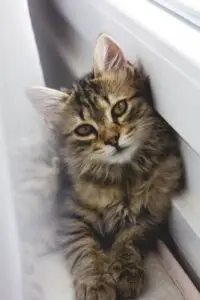
Sterilization of the male cat: an operation is entirely external that does not require hospitalization and less anesthesia is needed than the corresponding operation performed on the female. Specifically, the veterinarian, after anesthesia for a few hours, cuts the scrotum, extracts the testicles, closes the cord and vessels, cuts the balls and supplies the cat with antibiotics and then waits for awakening. The sterilization of the male cat is a surgical operation aimed at eliminating the sexual desire and reproduction of the animal.
Sterilization of the male cat: reasons
The advantages of neutering the male cat are there both if the “male” is domestic and domestic, and in the case of a vagabond heartthrob. In the first case, therefore, if our cat lives at home, from six months he will begin to mark the territory by hearing the call of the females in heat.
Living in a house where a male cat sprays urine in every corner, out of control, is not pleasant at all. The smell remains, persists, almost obsessively. In addition, in these conditions he literally has hormones out of control so if you do not proceed with the sterilization of the male cat, we will see him more and more nervous and aggressive. Nothing dangerous but very annoying. The repressed desire to mate plays tricks on you. The solution may be the neutering of the male cat.
In the case of living outdoors, the sterilization of the male cat is an important tool for the control of births, moreover the non-sterilized animals tend to fight to conquer the mates returning then full of scratches, abscesses and wounds. Furthermore, without sterilization of the male cat, there would also be the danger of the spread of diseases.
In general, there are no contraindications to sterilize the male cat, there are techniques that have overcome even the problems related to hypoglycemia, the veterinarian in each specific case can reassure us better.
Sterilization of the male cat: at what age
The optimal period for neutering the male cat often falls with the sixth month of his life, when he begins to go into heat. This means that when it expires, those typical behaviors such as urinating to mark the territory take off, it is a pity that the territory sometimes coincides with our home.
Therefore, there are those who recommend proceeding with the sterilization of the male cat before the cat in question takes this habit: often once taken, even if the cat is sterilized and in theory no longer needs to mark, it continues to to do it. Out of habit, in fact.
So it’s better not to let him take it. Another case of anticipating male cat neutering is that of those dealing with stray cats. Now six months are already pretty awake and difficult to capture and operate, better to proceed towards eight weeks.
Sterilization of the male cat: cost
It is difficult to give “universal” indications on the cost of sterilizing a male cat as it is an operation that depends a lot on the veterinarian and the price is at his discretion. The factors that affect the cost of this operation are for example our area of residence, the drugs and materials used and also the type and degree of structure in which you have the male cat sterilized.
Indicatively, the price can vary from 80 to 100 euros, it can go further if you turn to particularly luxurious facilities or if you require special treatments.
Sterilization of the male cat: convalescence
The sterilization of the male cat does not require hospitalization of the animal or long stays, on average the period of convalescence is indicated on two or three days. Then there may be after-effects or consequences that make us worry. Let’s immediately dispel a myth, or rather, a false concern.
That of the “soft thing” in the belly of our cat that can form after the sterilization of the male cat. It is due to the fact that, by removing the testicles, the cat no longer produces testosterone and this leads to less tone in the tissues that relax. The abdomen can then become mushy and fill with fat.
Here is a good reason to keep our cat online and be even more careful about his diet after neutering the male cat. In convalescence and beyond. As for the growth of our animal, there are no consequences: it will grow normally and the operation does not affect.
Male cat neutering: side effects
No side effects, therefore, for the sterilization of the male cat, indeed, many benefits, for cats health, for our home, for our health, consequently. For the health of the cat itself it is excellent that it stops fighting with other cats to conquer the kitten of his dreams, he will avoid injuring himself and getting into trouble.
The only trick is not to make it fat, but just be a little careful and not talk about a side effect. We also take into account that sometimes our sterilized cat wants attention, sweet sweet meows, and does not want food, but cuddles.







